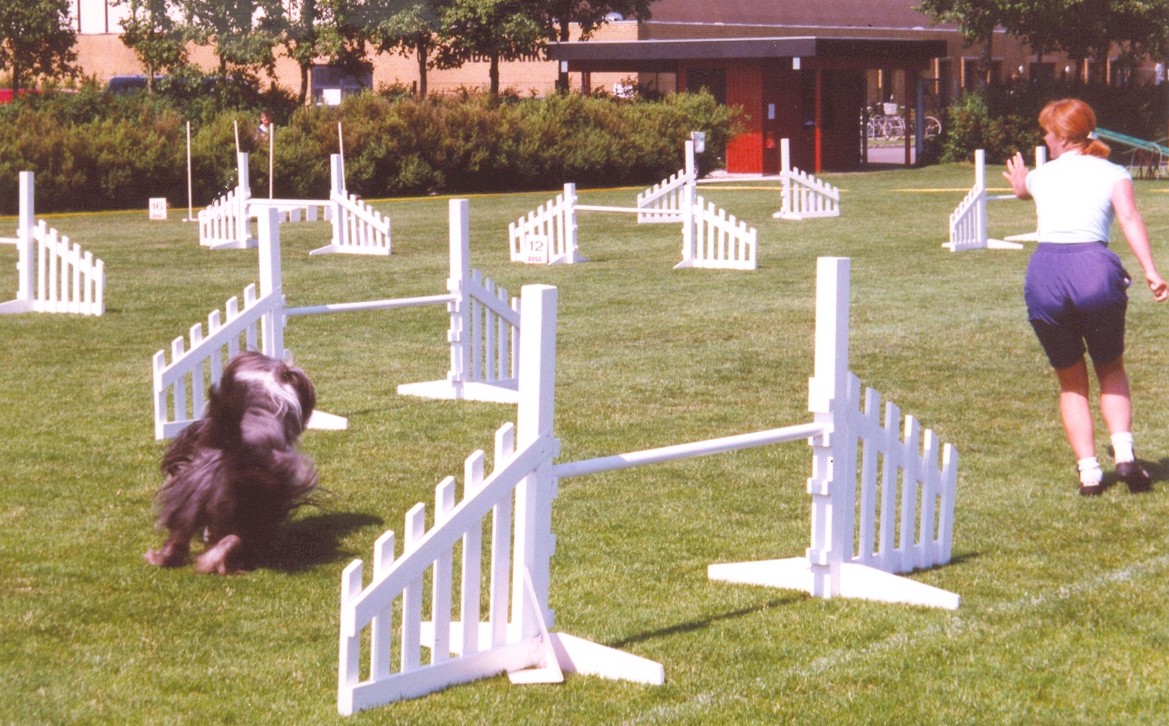
Agility - This is fun
The word agility comes from the
word agile which means movable, flexible or freedom, and it was in England the
first competitions took place. Agility is a sport for all dogs, especially our
Bearded Collie is fond of this sport and the breed, with its building very
agile. Agility was in Sweden, an official sport from 1987 and has been very
popular. It is a sport that makes improvisation, courage and freedom allowed.
All dogs can learn agility, it's just not all breed of dogs there can used, for
example. Broholmer and Great Dane, both of which are large breeds, will have
difficulty passing the tunnel, bag and wee. Most dogs love it and it is a good
way to combine work with pleasure on.
In the Swedish Bearded Collie Club both train and compete in competition. In
Denmark, agility has been promoting since the late eighties, and Denmark
participated as well, and won the 1991 World Cup in Dortmund. In the Danish team
participated Anne Winkel and her Tervueren Sacha.
Bearded Collie is fast, both in terms of the physical and the mental part of the workout, and it can be hard to keep up with it. Bearded Collie should not "switched" to agility, the mood in the ring rubs off on beardies, and it is therefore necessary with a ballast of obedience training before you begin to participate in this sport. Bearded Collie belongs as mentioned to shepherd breed and / these breeds are known to have a low stress, beardies requires an incredibly high pace and activity level, and if the bearded does not get that tempo the beardies will learn stress. Stress manifests itself in many ways: barking, biting into anything that moves, chewing, will not eat, indigestion etc. as long as a dog working with an improper behavior / habit likewise it take same time to correct the wrong behavior / habit.
A good idea is to take a basic obedience course before starting to train
agility, and it is important not to allow the Bearded, to run free and play on
the obstacles. The training is very demanding for the body, and especially the
joints there is a large load. It is very important that your dog is in good
shape before you start training, so no excess weight. Furthermore, it is very
important that you before each workout warms your dog.
The Bearded Collie can begin
training approx. 12 months with the obstacles that are closest to the ground:
The bag and tunnel are obstacles do not have as great a strain on bones, joints
and tendons. When the dog is over 15 months, the further work with low jumps,
and finally when the dog is 18 months wee and field hurdles. Field Obstacles are:
balance beam, the seesaw and large A, these obstacles each have 2 fields that
involve obstruction of the dogs' safety for the load, as these obstacles are
farther away from ground. You will make your Bearded one service, that x-rayed
hips and elbows. I've always started late with the training, for the sake of the
Bearded Collies late development.
Agility learning takes time, some coach 2 seasons before they begin their actual
competitive season.
We should never put too high
expectations for our dogs, that is just for "fun". You can set goals to attain a
reasonable level (ie a level that your dog can be), it is of course also allowed
to have big ambitions.
It is also a good idea in the initial phase of training at various levels along
with other dogs and dog handlers, and last but not least, when you start your
competitive season continues with regular training and competition, if you hold
too long breaks so it feels like starting over to build up a routine to "smooth"
runs without driver error. The 1'st competition season for me and Tobias was
pretty fun, it ended up with one, or rather a lot of disqualifications or
maximum clastime and at least 40 errors. The 2'nd competition season went much
better, we moved up in jumping class 2 (intermediate)and also got 2 pins for
advancement to the class 2 agility, the last pin took forever to get pulled
back.

Danish Championship call-up in Rønne, Judge Erik Nielsen. In this class ran also Johnny Ipsen, my trainer.

Danish Championship call-up in Rønne - Judge Erik Nielsen (photo taken by a photographer from the newspaper).
Tobias made his call-up/trial, and could thereby participate in DM.
Tobias got his third pin to Class 3, and there was a lot of good ran.
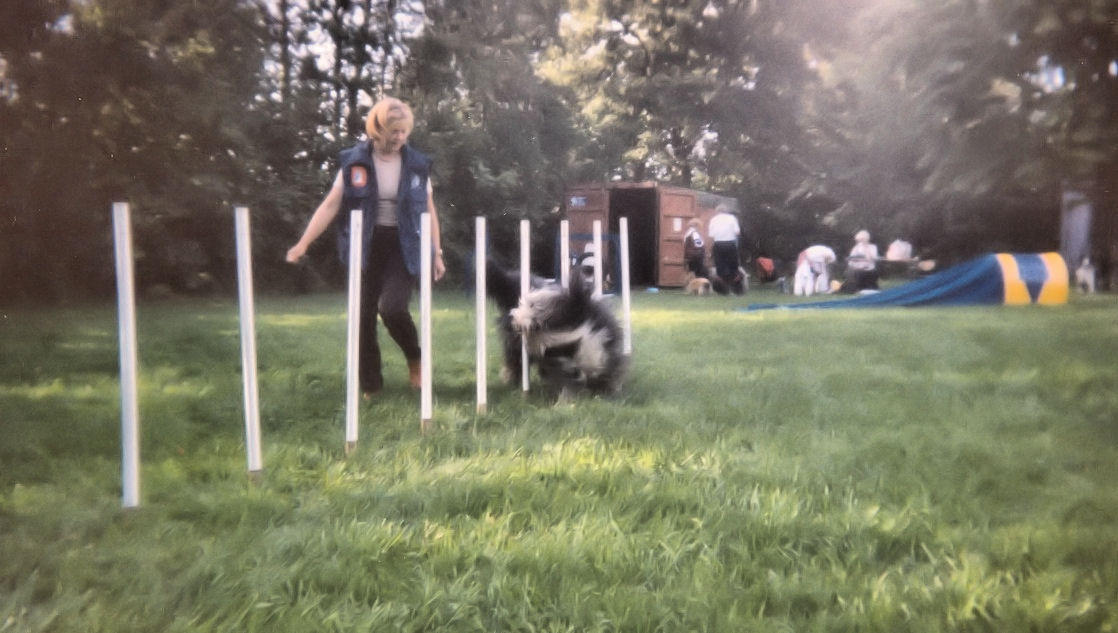
Training at Herlev Agility Team at that time lay the training area in the Højsletten. Today, club facilities are at Klausdalsbrovej in Herlev.

What road? That road or this road?? Ah, are you now sure!
As i said earlier are we in 3'dje season now and runs in agility and jumping class 2/Intermediate. Tobias is 2 times been placed among the top 3 and has 2 pins of class 3 jumps. Besides the many placings in his class, it has also become to placings in the open classes SP/AG which everyone can participate, the best result so far is a 7'ende seat in Spring class open at Danish Kennel Club rally in March 98, that was entered/participate 98 attendees. There has also been three out of four call-up/selection for Danish Championship 1998, and the final selection event was held on 10 August 98th.
When you start the 2'nd and 3'dje competition season, you hope that the dog is now so stable both on and off the field so it does not destroy the competition. It is therefore a good idea to train competitive levels or elements of them, at home at the club field, and in this way, you learn quickly from your "mistakes" and it is often elements you will encounter again and again in competitions. It is not entirely wrong when they say that 90% of the errors being committed, it is leads fault.
The condition for participation
in competitions is: The dog must be at least 18 months old and have an
Agility-result book issued by DKK or other FCI recognized kennel club. The dog's
pedigree number must be in the result book .. The rules are also available on
DKK's website. The result the book has pages for both official and unofficial
classes, dog results that are qualifying in both official agility classes as
jumping classes, introduced and signed in the result book by the judge. Your
official DKK results you submit to BCK after you have during the last
competition in which you are about to become Year Agility Dog. You can request
agility proportions through BCK.
Agility classes (AG) has obstacles with contact fields and can contain the
obstacle - Table.
Spring Classes (SP) contains no obstacles with contact fields.
Results obtained in the AG-classes have no influence on results obtained in the
SP class and vice versa.
Official agility and jumping classes include: Class 1 - Class 2 - Class 3 and
Elite class, Open class also official class in the competition for DKK's the
year AG-dog. The dog can only participate in the class that it is qualified.
Open Agility Class and Open jumping classes on Saturday and Sunday's
qualification to compete for Kennel Club's yearAllround dog.
Agility one can run for many
years, especially if you fits in, not to over train, and thus erode our best
friend. There is also said about dog agility, that they tops the career when
they are about. 5 to 7 years. In its ideal performance sport requires harmony
and complete understanding between dog and handler. It is a sport that makes
improvisation, courage and freedom allowed. Most dogs love it and it is a good
way to combine work with pleasure on.
I am myself back with my "agility career" after having had a break where I have
spent time on obedience. Our AG girl - Rose are very excited that we are
starting again. On 27 September, we were off for the first time in two years.
The first of the classes we attended, was a jumping class and it went beyond all
expectations, Rose was number 3 in the class. Rose has always preserved the
shape of the weekly training days.
Tobias reached the age of 10 ½ years, becoming district champion Senior SP. The contest was held in Hillerød summer of 2002
Susanne and Tobias
Rose had her agility debut on 13 March 2005 - Vordingborg for a DCH Event
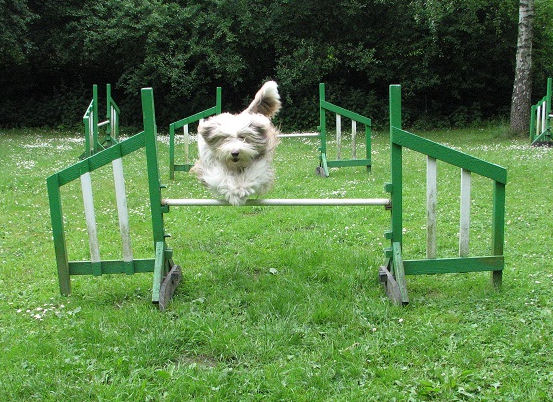
Rose went really started with training when she got his HD results, 17 months
old. Rose is delighted to work with jumps and combinations. Especially wee and
tunnel is she glad to work with. I have chosen to begin with seesaw, and only
the seesaw. The reason I begin with the seesaw is that it moves, and Rose will
learn to walk "slowly" over the seesaw, because it moves. When Rose is familiar
with the seesaw, and will take it correctly. Will the next obstacle Rose must be
the boom. When Rose is in front of the boom, she will not know whether it is
boom or seesaw she looks at when she can not see beyond the upper edge. My
experience has been that the boom passes at a slower pace. When Rose is sure at
the boom, I will conclude with the obstacle, the A board. The A board is also a
obstacle to overcome with pretty much going on, and again my experience has been
that, the A board was pass over at a steady pace when the dog started with the
seesaw. Rose has learned that some of the obstacles are moving, which now makes
the seesaw. Rose has almost no fault at the contact fields.
Rose is very responsive to my commands, which has made us to quickly come a long way. Physical stamina is Rose and she is very agile. I am very pleased to be on competition class again.
Lida and Sweedish Bearded Collie Club 40 year anniversary in Stockholm
Rose was entry in both Agility
and Jumping class. Both classes results were merged into a single. Rose was total
number 1 with 1 refusering and 1 overtime faults.
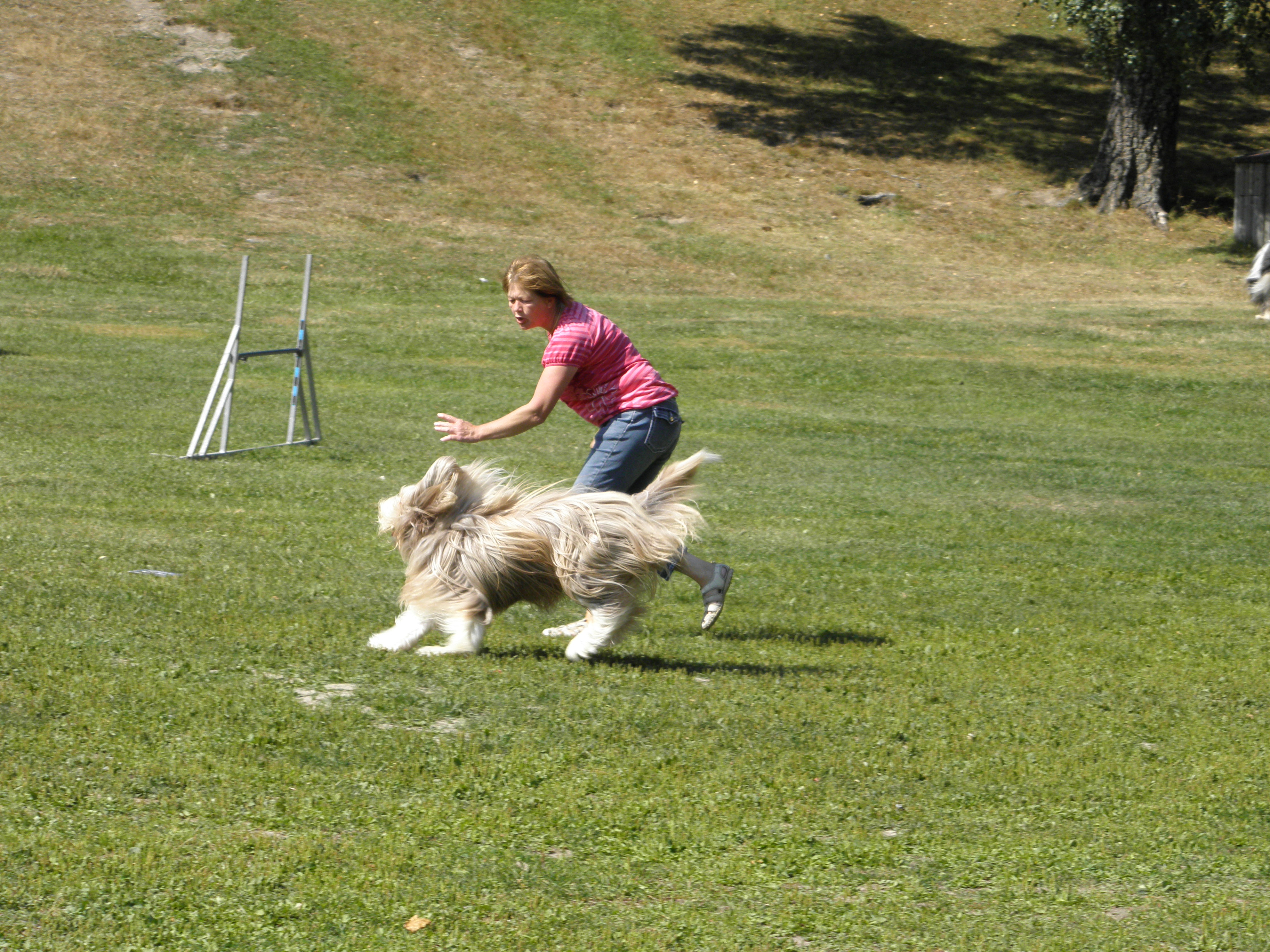
Here has the startsignal and whistle to start agility class - And Rose, as usual, full of joy and speed
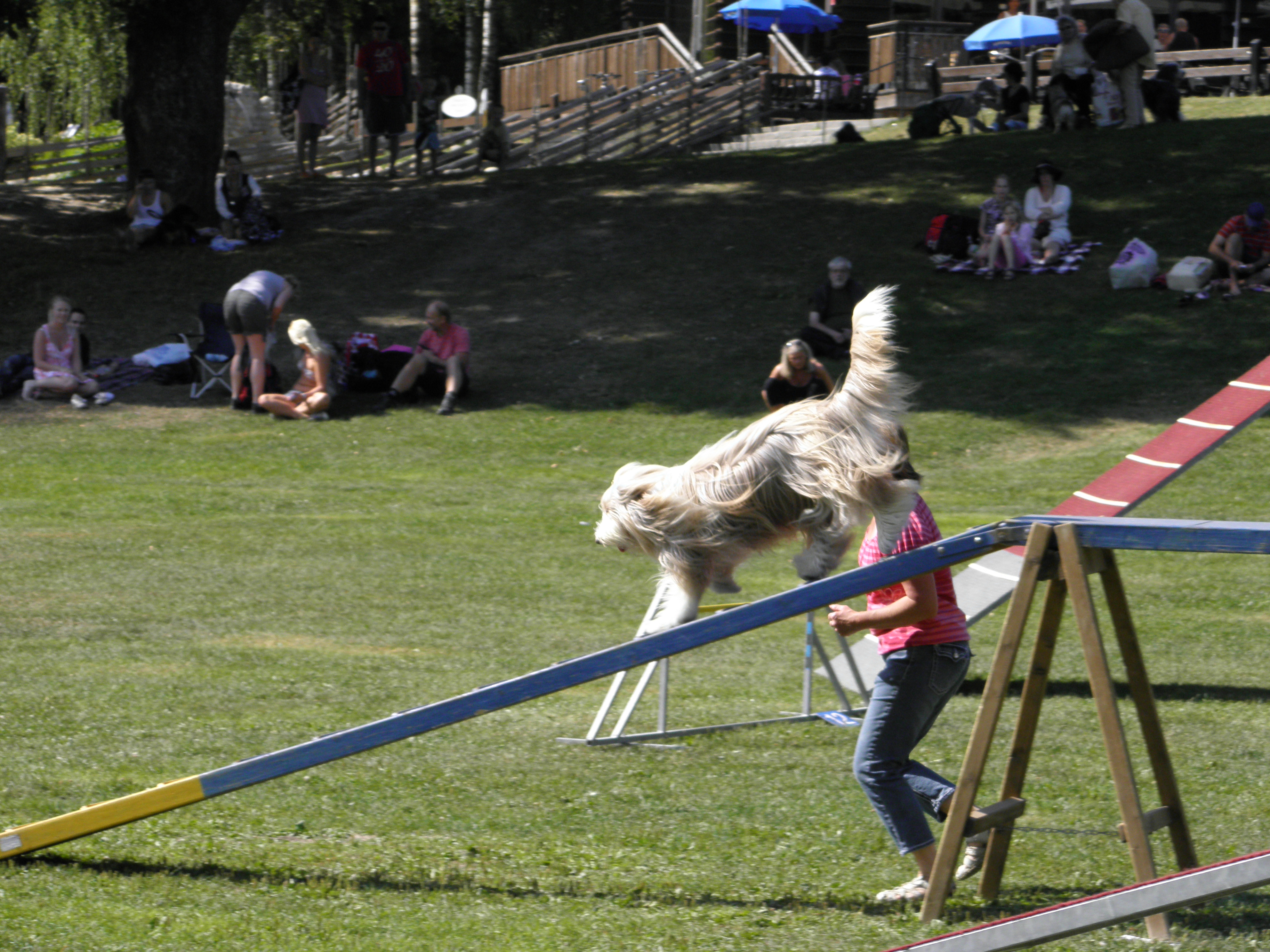
All field/contact obstacles was taken correctly and no errors - All fields/contact were affected

Here are I and Rose along with number 2 and 3 in class
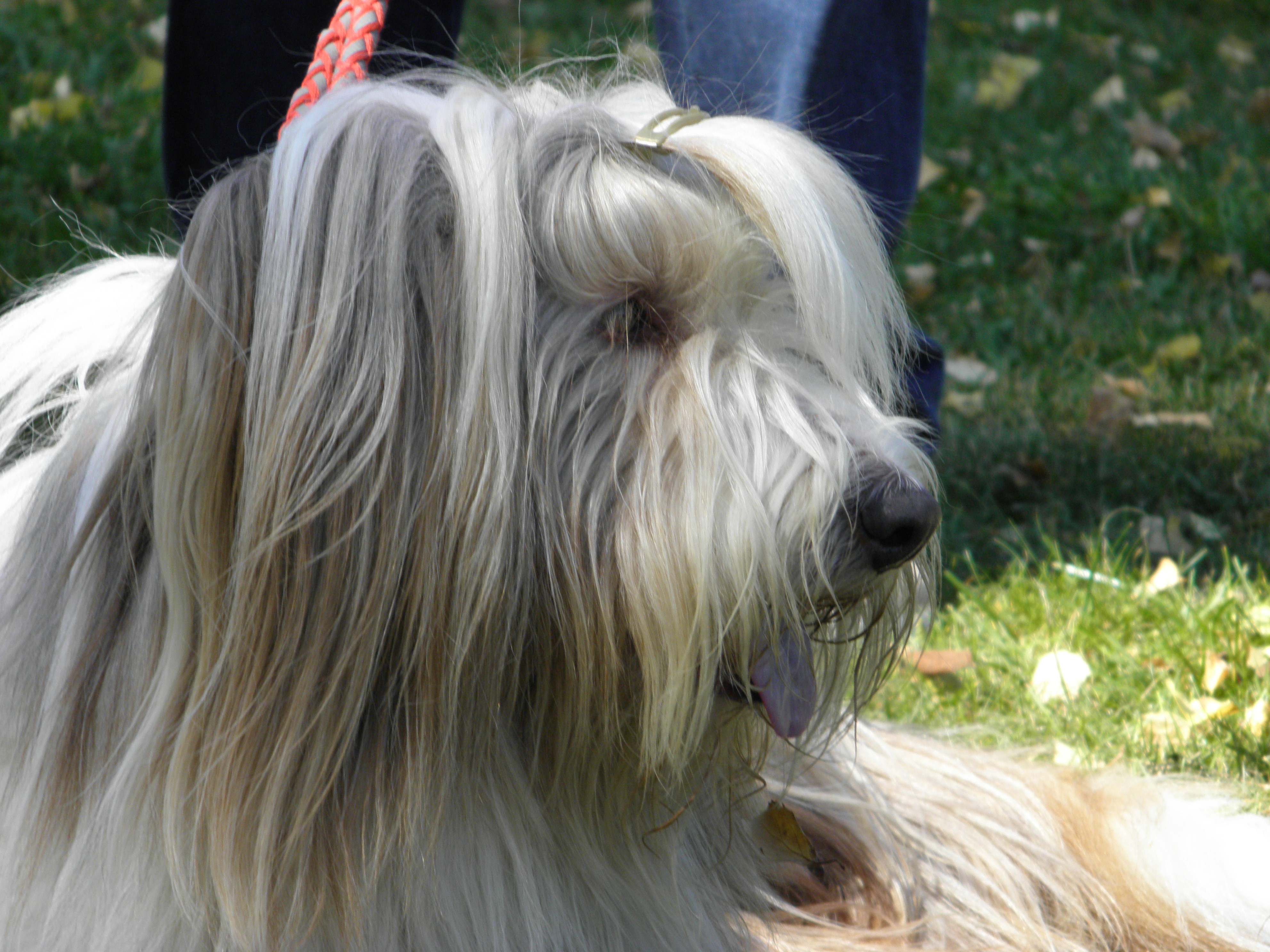
Rose lies quietly and waits for the Jumping class to begin

The DGI Lands tournament with Lilli Andersen (my mother) who runs for Hvalsø Dog Friends Agility Club
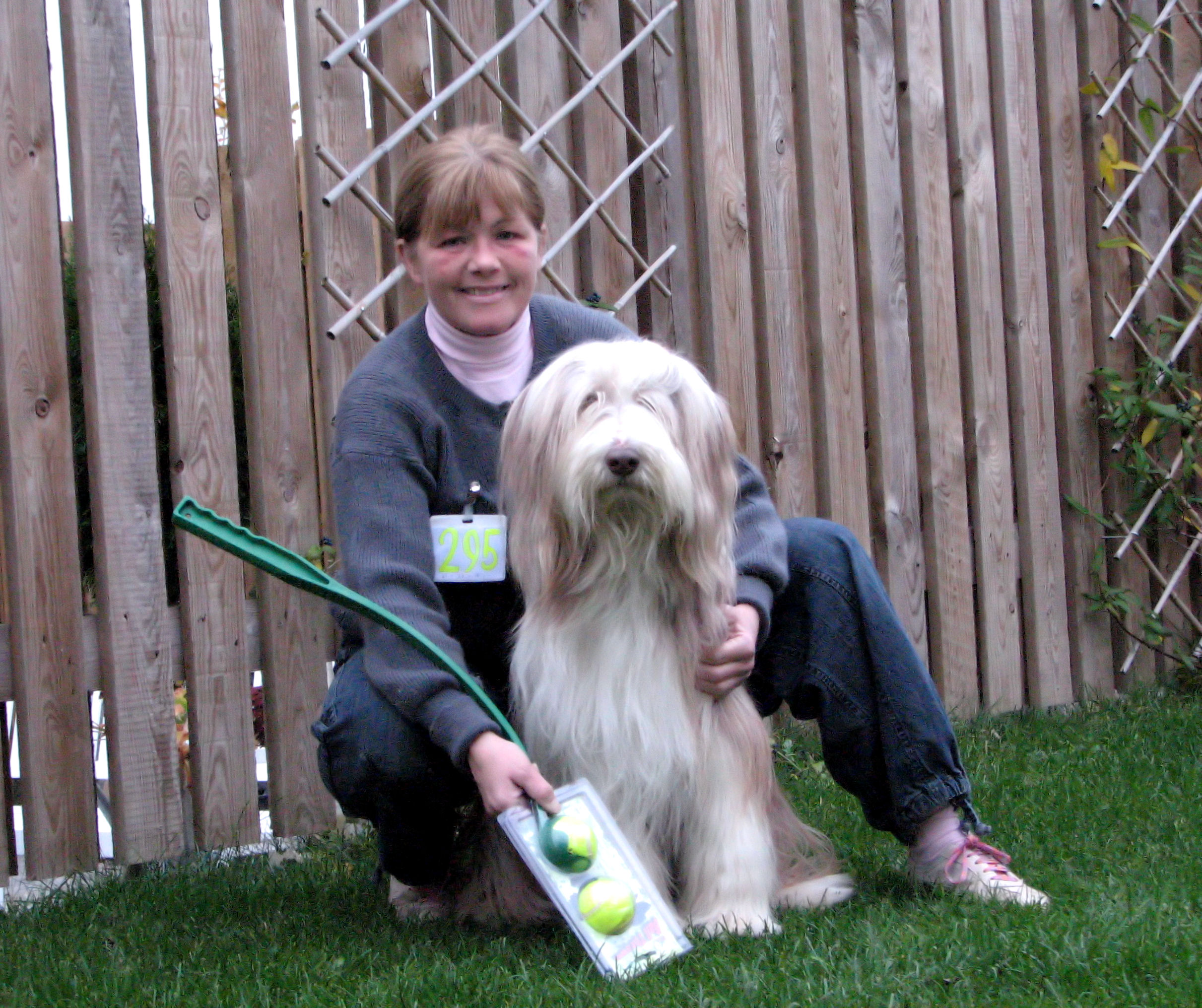
Have been to Agility competition in VAS (Danish Border Collie Club) and was ranked number 7 in the class Agility of 22 participants
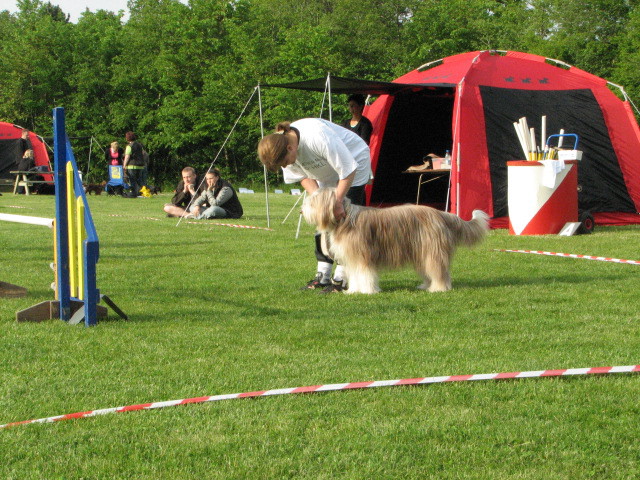
Club Championship 2009th in DogClub Lyngby, that also goes over 2 classes Agility and Jumping class

And there is no field faults in this class
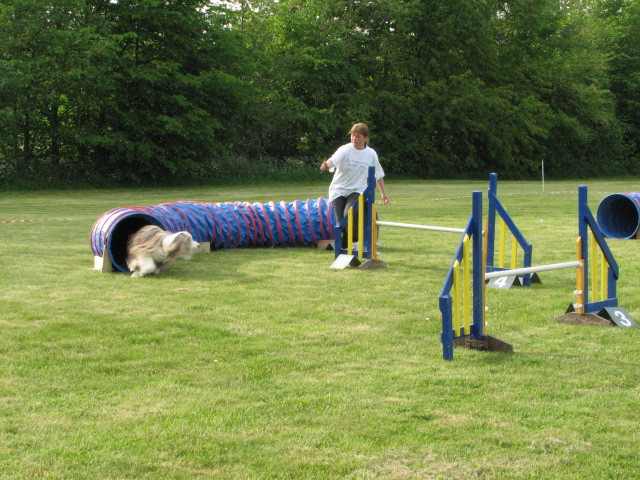
Club championship in Lyngby the 2009th - Judge Johnny Ipsen
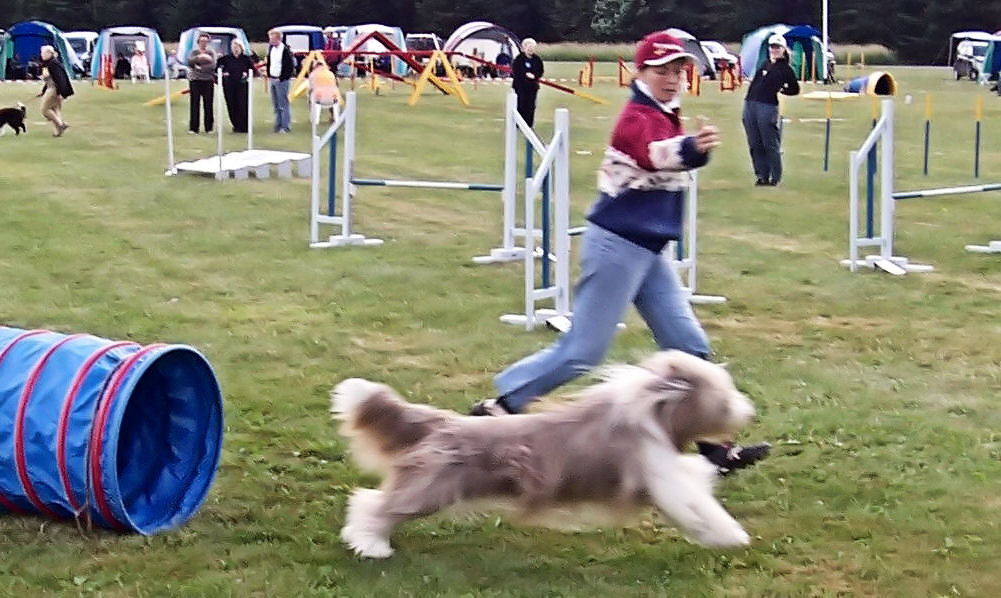
Knuthenborg Agility competition - Judge is my friend Nanna Holt Kjaer judging class 1
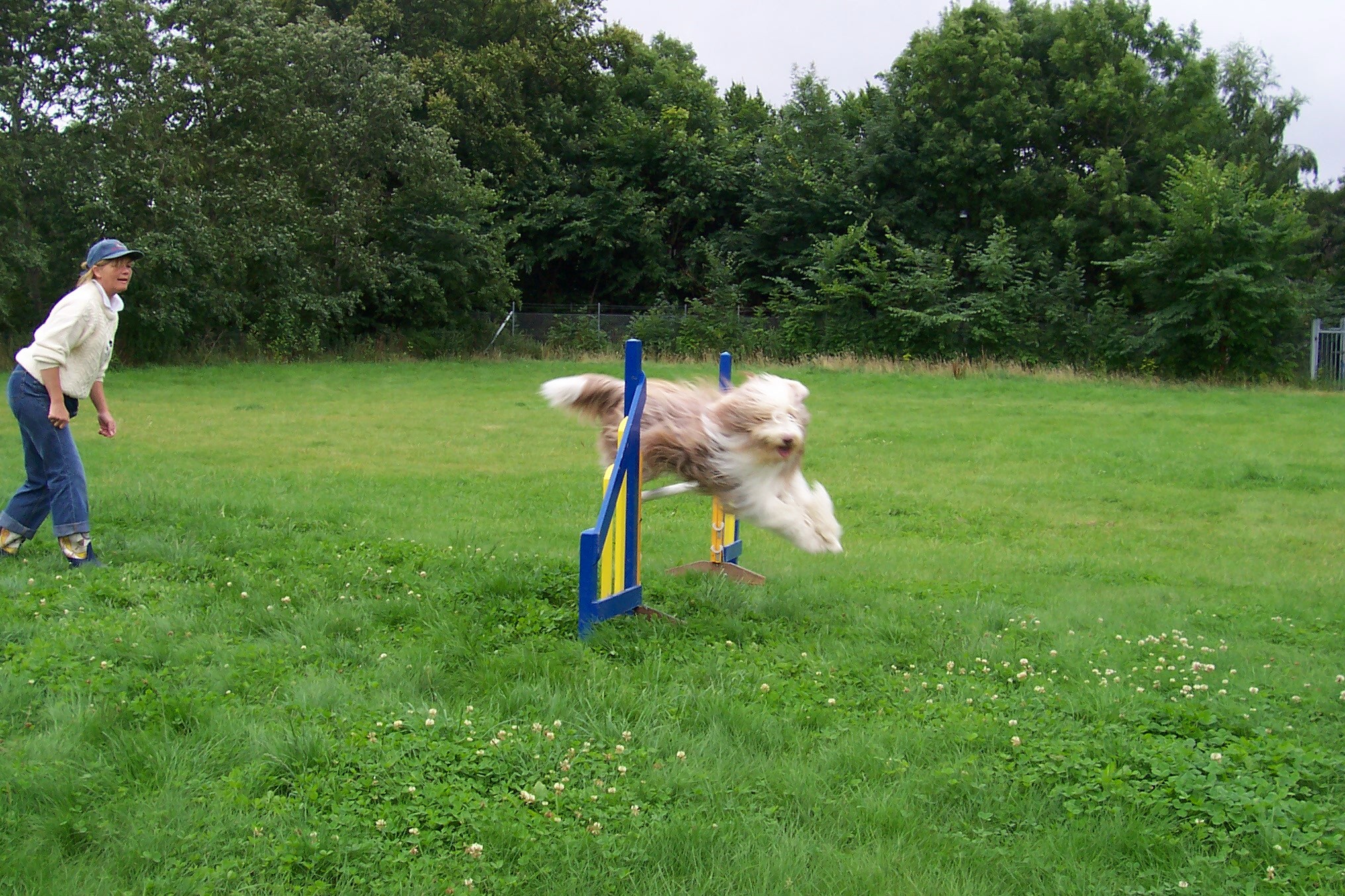
Training in DogClub Lyngby - Thursday morning
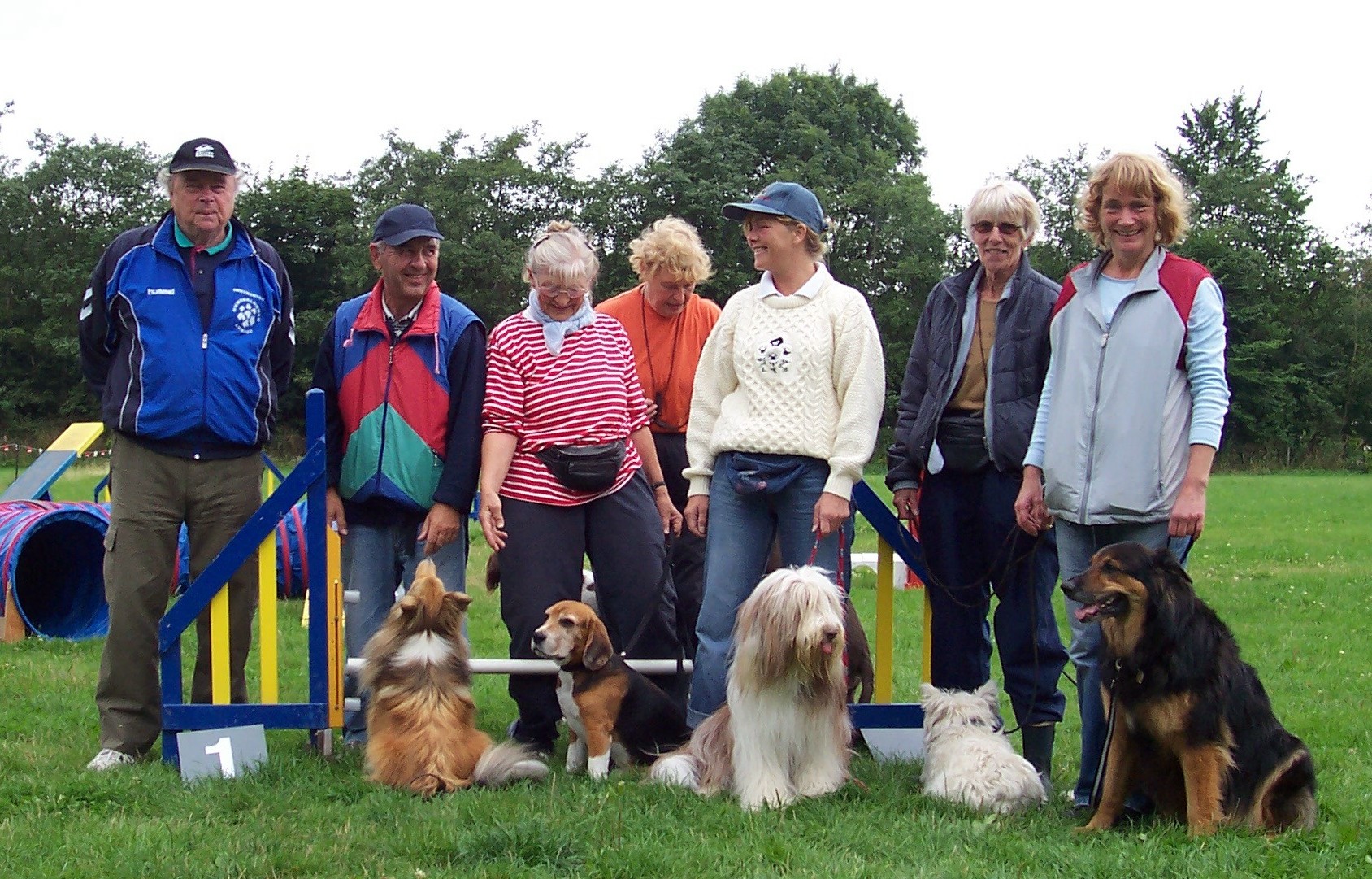
Coffee or Mix Team in DogClub Lyngby, where I train every Thursday. Far left
Johnny Ipsen, which I have ran many competition together. Such we ran both as
Bornholm had DM trials.
There are so many different races on the Coffee Team, this picture is older but
today there Bearded Collies, Border Collie, Beagle, Icelandic Sheep Dog and
Kelpie on the team, and all the dogs get on really well with each other - We
have a super good team and we enjoy ourselves very much